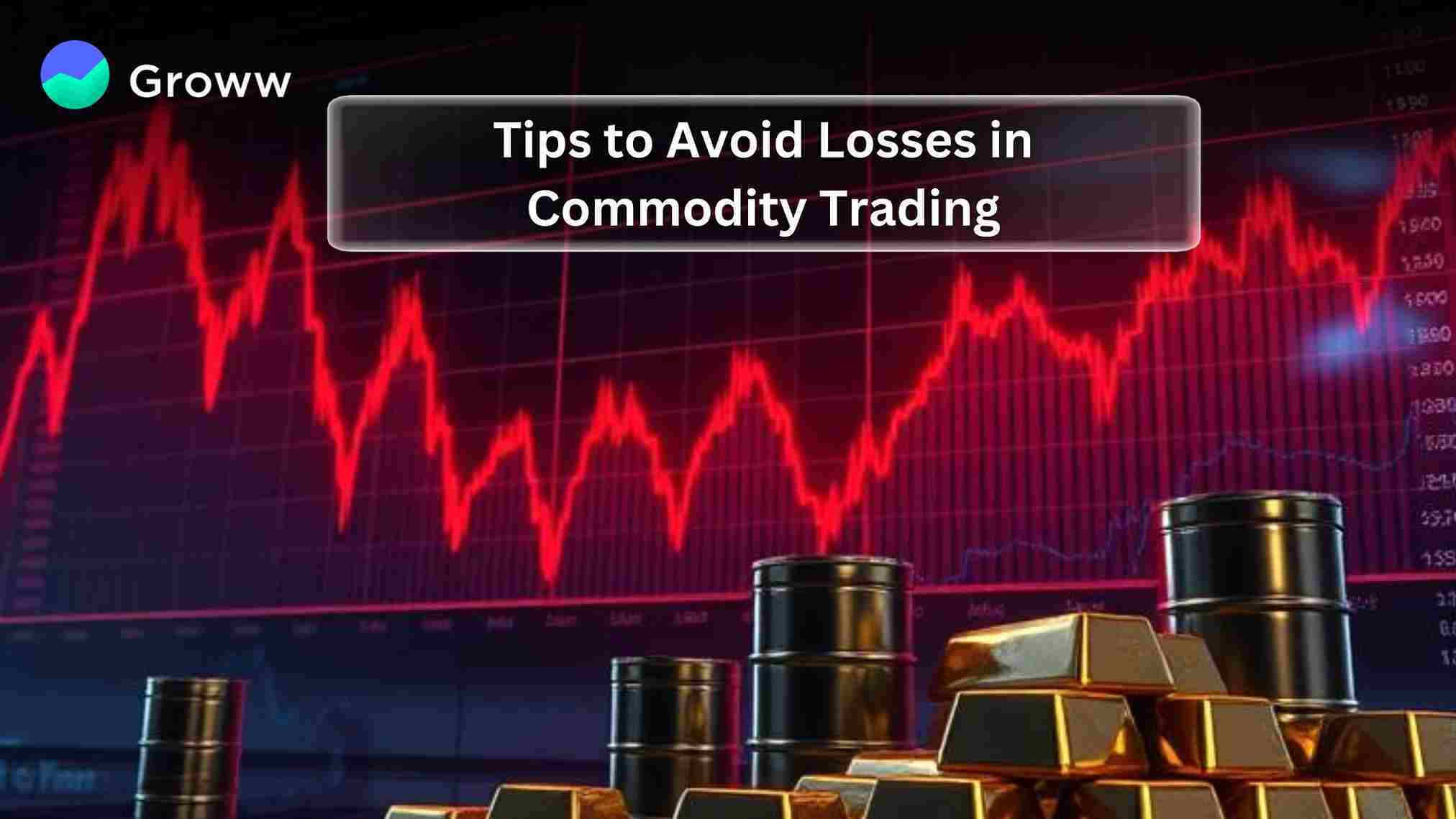Tips to Avoid Losses in Commodity Trading

Commodity trading can be highly rewarding, but it also carries significant risks. Many traders experience losses due to market volatility, lack of knowledge, or emotional decision-making.
We have curated this blog with an aim to help commodity traders avoid losses in commodity trading.
What is Commodity Trading?
Commodity trading refers to the buying and selling of raw materials, their derivatives, and primary goods. In this type of trading, traders trade in:
- Agricultural commodity derivatives, including
- Cereals
- Pulses
- Spices
- Oilseeds.
- Non-agricultural commodity derivatives, including
-
- Bullion (gold, silver, etc) and gems
-
- Energy commodities, such as crude oil, natural gas, etc
-
- Metals, such as aluminium, copper, iron, lead, nickel, etc.
Why Do People Lose Money While Trading In Commodities?
Commodities are cyclical in nature. That is, their prices tend to move (rise and fall) in certain cycles.
Commodity traders profit by predicting these price movements. They buy low and sell high (or vice versa in the case of short selling).
However, making a profit is not as easy as it sounds!
Because of the cyclical nature of commodities, predicting price movements isn’t easy, as these are influenced by factors such as weather, politics, supply, demand, economic changes, etc.
Let’s look at an example.
If production by a major oil-exporting country is disrupted, oil prices globally can spike. Conversely, if another country discovers vast new oil reserves, prices could drop.
In this case, oil prices will entirely depend on supply and demand, which are changing and unpredictable. In one month, there might be more requirements, but in others, there might be less.
While some traders strike the right balance in timing the market, many lose because of the unpredictability of price movements. Other factors that lead to a loss in commodity trading are:
- Lack of market knowledge
- Overleveraging
- Ignoring stop-loss orders
- Emotional trading
- Poor risk management.
If you want to know how to avoid these pitfalls, read on!
Tips to Avoid Losses in Commodity Trading
-
Understand Market Fundamentals
Commodity trading involves trading in different commodities, such as gold, crude oil, agricultural products, metals, etc. Therefore, it's vital to understand the nature of the commodity market thoroughly before beginning to trade.
It involves the understanding of
- How commodities are classified
- How commodity pricing fluctuates due to
- Supply and demand dynamics
- Geopolitical events
- Weather conditions
- Currency fluctuations
- Government policies and regulations
- Global economic trends.
-
Diversify Your Investments
To reduce the risk of losses in commodities trading, it's good to diversify your portfolio across various commodities. This way, if the price of one commodity drops, the others might remain stable or even increase and so, losses could be minimised or avoided.
This approach is known as diversification and is a good way to balance out potential losses.
-
Set Stop-loss Levels
Due to market volatility, prices fluctuate rapidly in commodities trading. Consequently, there is a significant risk of losing your capital if the trade goes against your strategy. However, you can mitigate potential losses by setting a stop-loss order.
It automatically closes a trade when the price reaches a predetermined level. This prevents excessive losses, which is one of the main reasons many traders abandon trading.
Thus, with stop-loss levels, you can establish risk parameters for each trade and safeguard your capital.
-
Find Your Target Market
In commodities trading, traders can trade in different commodities. However, not all commodities behave the same way. Also, different markets have unique price patterns, demand-supply dynamics, and risk factors.
That is why finding the target market is crucial for successful commodity trading.
It’s pretty obvious; you won’t be able to master this in one or two trades. For that, you need to be consistent, make a trading journal and analyse what’s working and what's not.
-
Avoid Overleveraging
Leveraging allows traders to trade with borrowed capital from the broker. While leveraging can increase profits, it can also wipe out the trader’s capital if the market moves against his bet.
For instance, a trader has ₹10,000 in the trading account and uses 10x leverage. This means the trader can take a position worth ₹1,00,000.
If the stock price moves by 5% in the trader’s favour, it results in a profit of ₹5,000 (₹1,00,000 × 5%). However, if the stock price drops by 5%, the loss would be ₹5,000. This is half of the actual capital.
Now, if the price falls by 10%, the trader loses ₹10,000, completely wiping out the initial investment.
That’s why it's vital to use leverage cautiously and have a proper risk management strategy in place.
-
Stay Updated with Market Trends
In trading, knowledge is power. So, staying updated with market trends is among the best ways to avoid losses and maximise profits.
For instance, when the Russia-Ukraine war started in early 2022, crude oil prices shot up. Russia is one of the largest oil exporters in the world, and the war led to sanctions on Russian oil.
This created a supply shortage, pushing oil prices above $100 per barrel.Traders who stayed updated bought oil early and made profits. Those unaware missed the opportunity or entered too late.In short, successful traders always follow the latest news and expert reports.
Conclusion
Commodity trading can be profitable if approached with the right mindset and strategy. By staying informed, managing risks, and trading with discipline, you can minimise losses and maximise your chances of success.